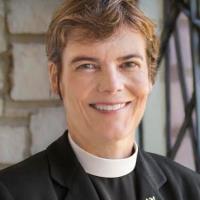Commentary on Mark 1:29-39
Jesus intervenes in the conflict between the power of evil and the power of God by doing deeds of power and preaching.
This lection has three parts: a healing story, a description of the multitude brought to Jesus and the many who are healed and exorcised, an account of Jesus going to the wilderness to pray and, when found, expresses his resolve to go to preach in the towns throughout Galilee. The scenes alternate between “private” and “public,” an encounter among a few people in a “house,” then a crowd outside “around the door,” then prayer in a deserted place, then decision to preach farther and farther in Galilee. The sequence illustrates Jesus escalating “fame” (Mark 1:28), the tension which that creates — Jesus going in the dark to the desert to pray and forbidding the demons to speak.
The center of gravity is the healing of Peter’s mother in law. Preaching that minimizes the significance of this story with jokes about mothers-in-law misses the importance, beauty, and resonance of the episode. Like many of the stories in Mark, this one is in the process of being “theologized,” developing into a symbolic story that reflects the experience of the early believing community. In Mark’s healing stories, the details matter — who it is, where it is, what the ailment, the symptoms. The specifics of the story can channel the preacher’s imagination.
Here it matters that the setting of the house of Simon and Andrew and that the person who is ill is a member of the family. Although Mark is sometimes claimed to be “anti-family” (Mark 3:31-35) family bonds, particularly the bond of parent and child remain sacred throughout the story. Parents beg for healing for a child (Mark 5:22-24; Mark 7:24-30; Mark 9:14-29). Here the one healed is a mother. Jesus is informed about her by James and John, the second set of brothers introduced in Mark 1:19. Jesus “takes her by the hand” a practical action to help her up and a connection of touch that is an element in the healing. Jesus takes of the hand of the daughter of Jairus in Mark 5:21 and the epileptic boy in Mark 9:27.
The word, translated by the New Revised Standard Version (NRSV) as “lifted her up” is the word, “raised” — “he raised her up.” In Mark 16:7 the young men tell the women, “But go, tell his disciples and Peter that he is going ahead of you to Galilee; there you will see him, just as he told you.” The ending of the gospel sends the disciples (and the readers) back to Galilee where Jesus performed his powerful deeds of healing and feeding. Readers of Mark are not told of Jesus’ appearances after his resurrection (in the original version of the gospel of Mark that ends at Mark 6:8). Rather, they are sent back to Galilee where they will remember, Jesus’ ministry of resurrection. The verb to “raise up” is used in healing stories in Mark 1:31, 2:9, 2:11, 3:3, 5:41, 9:27. The healing of Peter’s mother in law is the first resurrection story in the gospel.
Just as the demons do in the previous scene, the fever “leaves her.” Having been “raised,” she “serves” them. On the most literal level it may mean that she gets up and prepares and serves food. But the verb “to serve” is another key term in Mark’s gospel. Its presence here shows that her service is to be interpreted as a paradigmatic response of faith. Meaning both to serve at a table and to do ministry, the verb diakonein is used of the angels in the wilderness who “serve” (translated in the NRSV “waited on” Mark 1:14) and of the women who followed Jesus and served him (translated in the NRSV “provided for” Mark 15:41) Serving epitomizes Jesus’ own ministry: “For the Son of Man came not to be served but to serve, and to give his life a ransom for many.” (Mark 10:45). She is an icon of resurrection and a paradigm of Christian ministry.
Mark’s gospel invites us to look for experiences of resurrection in everyday life in the lives of families and in the social and political order. A debilitating fever is equivalent to death if one cannot do what is human to do, to serve, to feed, to provide for. To be released from illness and restored to oneself means one can fulfill responsibilities to others. Repair of the bonds of family is a dimension of resurrection. In Mark’s gospel there is no “individual” healing, only those that repair relationship, son to father, daughter to mother, and here, mother to children. Even the unaccompanied woman in the crowd, when healed, becomes “daughter” Mark 5:34.
The resurrection life that Jesus proclaims here at the opening of Mark’s gospel and that Christians experience, is not unambiguous or uncomplicated in the world in which we live. The verses that follow this story of resurrection suggest the enormity of the suffering (“the whole city was gathered around the door”) and the toll the ministry takes on Jesus. Mark’s gospel is honest about the opposition to and the cost of proclaiming the good news.


February 4, 2018